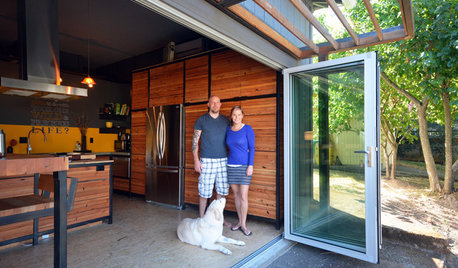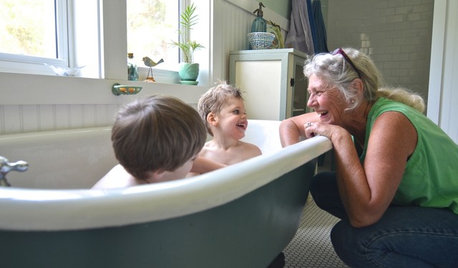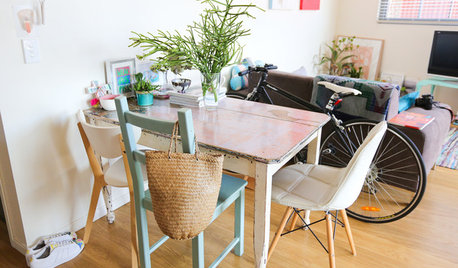First time canning, couple questions!
happyday
12 years ago
Related Stories

REMODELING GUIDESConsidering a Fixer-Upper? 15 Questions to Ask First
Learn about the hidden costs and treasures of older homes to avoid budget surprises and accidentally tossing valuable features
Full Story
MY HOUZZHouzz TV: A Couple’s Garage Becomes Their Chic New Home
Portland, Oregon, homeowners find freedom in a city-approved garage home with DIY industrial flair
Full Story
MODERN ARCHITECTUREHouzz TV: This Amazing Lake House Made a Couple’s Dream Come True
Step inside a dream home on Lake Austin, where architecture celebrating gorgeous views has a striking beauty of its own
Full Story
INSIDE HOUZZSee a Couple’s New Spa-Like Bathroom From Lowe’s and Houzz
The sweepstake winners’ master bathroom gets a makeover with a new shower, tile and storage space
Full Story
BATHROOM MAKEOVERSFrom Canning Porch to Beautiful Vintage Bath in Oregon
Thrifty finds and DIY labor transform a cramped space into a serene hotel-style bath on a budget
Full Story
LIFEWorld of Design: Discoveries of 10 First-Time Homeowners
See how people around the globe have shaped their starter houses and made them their own
Full Story
GARDENING GUIDES10 Easy Edibles for First-Time Gardeners
Focus on these beginner-friendly vegetables, herbs, beans and salad greens to start a home farm with little fuss
Full Story
ARCHITECTUREGet a Perfectly Built Home the First Time Around
Yes, you can have a new build you’ll love right off the bat. Consider learning about yourself a bonus
Full Story
MOST POPULAR8 Questions to Ask Yourself Before Meeting With Your Designer
Thinking in advance about how you use your space will get your first design consultation off to its best start
Full Story
HOUZZ TOURSMy Houzz: A Musical Couple's Home Strikes a Personal Chord
Light, glass and many musical instruments animate this 1905 bucolic Washington farmhouse
Full Story





digdirt2
happydayOriginal Author
Related Professionals
Saint Louis Park Landscape Architects & Landscape Designers · Wixom Landscape Architects & Landscape Designers · Bloomington Landscape Contractors · Brookline Landscape Contractors · Conroe Landscape Contractors · Lake Zurich Landscape Contractors · North Haven Landscape Contractors · North Lauderdale Landscape Contractors · Porterville Landscape Contractors · Shaker Heights Landscape Contractors · Tinton Falls Landscape Contractors · Beaufort Roofing & Gutters · Wilmette Roofing & Gutters · Alameda Driveway Installation & Maintenance · Springfield Driveway Installation & MaintenancehappydayOriginal Author
digdirt2
happydayOriginal Author
happydayOriginal Author
digdirt2
macybaby
Jamie M
happydayOriginal Author
happydayOriginal Author
readinglady
happydayOriginal Author
readinglady
happydayOriginal Author